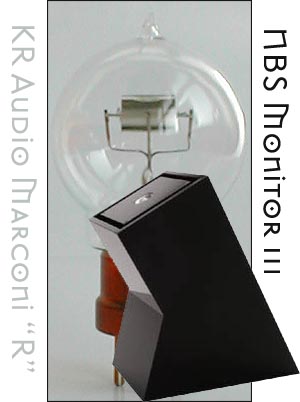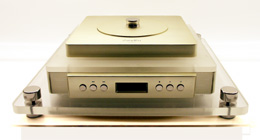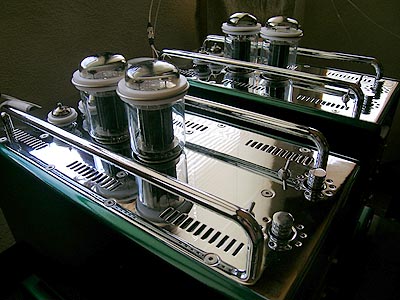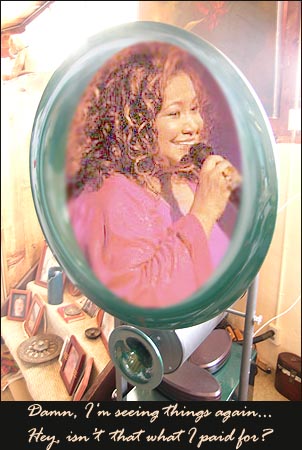 |
|
|
|
 |
|
|
|
 |
|
Reasons for what? To disagree over. To be smitten with. To get used to. To subscribe to. To not comprehend. To vehemently regard as outdated, passé and plain wrong. In Edward Burns' comical flick The Brothers McMullen about three catholic brothers in Long Island, Jack is married but contemplating an affair while hard-lining religious-to-the-letter Patrick reads him the riot act about sin and eternal damnation. Jack knows about sin. He actually and rather firmly turns down the sexual advances of his stalkress the first time around. But she's persistent as Eve and Jack soon adapts his formerly strict views to accommodate his desires. What was wrong becomes if perhaps not lily-white right then right enough to indulge in anyway. With each subsequent slip into extra-marital sack time, his allegiances to the faith of clear-cut right & wrong crumble further. What was wrong becomes righter and less reprehensible - though being Catholic, hereditary guilt naturally puts a damper on mental justifications which isn't at all helped by young brother Patrick's self-righteous reprimands to straighten him out and have him fly right. By the time Jack breaks up his affair, it's no longer a matter of sheer principle triumphing over lust. It's simply to save his marriage. Meanwhile Jack's girlfriend renounces the faith to have premarital sex and Patrick doesn't seem too upset by the implications for his virginity.
|
|
 |
|
This by way of illustrating that what can seem like an audiophile wrong can become a right over time and with plenty of exposure and practice. Vice versa works too - and no Catholicism or guilt required. It's easy to get used to a particular sound or subscribe to a particular school of approach only to hit a rut which, though being constantly refined and tweaked, never gets unstuck. For a personal exploration about this danger and how it might pertain to my reference system, the end of August will see me go on the Forbidden Fruit Tour. Suggestive title? You bet. While my wife is attending an advanced course in Russian Icon painting in upstate New York, I shall attempt to sample as many privately owned statement systems in the Big Apple as I can cram into six days. Who knows? Perhaps I'll finally see the error of my tubular and horned ways.
In a recent review, a colleague wrote "... even though I write about audio equipment, I am often perplexed by how some audiophiles define musical realism, especially in terms of the sound of speakers. Two examples: Horn-loaded and single-driver speakers. These are often paired with single-ended-triode amps, and the sonic outcome is considered musically real. Such speakers are severely limited in many respects but maximized in one: Their ability to play loudly with little power. One can certainly enjoy this sort of sound, even love it, but it is not convincing. There are too many limitations..."
|
|
|
 |
While I would concur that especially single-driver speakers might not make ideal reviewer's tools for most folks due to their response non-linearities and limited extension, I wouldn't go so far as to ridicule them or write off horns even for reviewing purposes. In fact, were I endowed with the requisite architectural space and financial gravitas, Avantgarde Trios with Basshorns would be something I'd aspire to - and not for their ability to play loud but rather, to resolve the finest of micro-dynamic shadings at even the most subdued levels in a thoroughly convincing, musically realistic fashion. However, I'm keeping an open mind to be romanced and seduced by non-horn speakers of every persuasion during my upcoming tour. One thing I remain rather certain of regardless? That no matter what excellent solid-state system I might encounter, my preference for tubes will remain unchallenged. Why should that be so? Tubes can fail. Tubes can drift. Tubes age, period. To spot the precise moment at which they cross the line into |
|
compromised performance always becomes obscured by how gradual this process tends to be. When you finally notice, it's because things have really fallen from grace. The output impedance of tubes tends to be several magnitudes higher than transistors, hence non-linearities into variable speaker impedances are likely. THD measurements can be enigmatic to say the least. There can be noise issues. As voltage devices, tubes don't deliver the current necessary to truly control speakers. If you're a test bench specialist like John Atkinson, tube circuits are at best compromised and at worst a joke.
Yet the fact remains that many audiophiles who should know better are sold on tubes. That includes plenty of reviewers. On the moons alone, count Bill, David, Edward, Jeff, Jim, John, Jules, Ken, Marja & Henk, Paul, yours truly, Stephæn and Steve in the valved camp. Chip, Edgar, Les, Mike and Phil do solid-state. John's bi as am I. 14 out of 19. That's quite a skewed balance if we were taking numbers. And, we're not the only reviewers to have succumbed to the lure of tubes.
|
|
|
Reviewers aren't better or more sophisticated listeners per se. What really differentiates us from non-reviewers outside of publishing our opinions -- the chat rooms are evidence for how that's no longer any exclusive affair either -- is the constant level of exposure to equipment. If tubes were as flawed and compromised as they seem on paper, you'd expect us to switch allegiances as soon as we encounter a maintainance-free transistor amp that offers equivalent, never mind better performance. Make no mistake. Whether they admit it or not, all tube hounds would love nothing better than to kick the practical issues associated with valves out the door for good if something else offered comparable performance. If the guys and gals with the steady access to all manner of non-tube gear don't see the light, what, pray tell, really gives with this strange addiction?
Certain listeners claim that the new breed of Tripath, Toccata or ICEPower digital amps bridges the gap between tubes and traditional solid-state. I would agree about a certain middle ground attained. But that does not mean they sound the same as SETs from the likes of Art Audio, Audiopax, LAMM, Wavelength or all manner of other superior makes. They don't. I've performed this type of comparison many times. As soon as I come across a non-tube amplifier that lights my fire the way SETs do, I jump ship and never look back. I've heard only one prototype sand amplifier which, if it ever goes into production, already has my name on it as my new reference. That may never happen. Until then, tubes done right rule. |
|
|
 |
|
Another case in point? Digital. The new Ensemble separates currently in-house are prime examples of digital state-of-the-art. A friend who also has experience with dCS and Meitner feels they all play in roughly the same leagues. Yet where it matters to me, the tubed Zanden does things I wouldn't trade. Those who know the Zanden will concur that it doesn't flaunt its internal presence of glass at all. Yet when taken out of the system, something very concrete yet ephemeral is sacrificed.
|
|
|
|
With amps and digital thus far, this loss occurs in the domains of tonal fullness, image density, three-dimensionality, extended decays and, as implausible as it may sound, dynamics between the lines, in the miniature fluctuations of emphatic expressiveness. While this sounds like quite a list, the quantifiable differences are in fact rather small. Only from a perspective of musical pleasure and overall gestalt do they become vital. It could well be that solid-state is ultimately more honest when we concern ourselves exclusively with the encoded signal on the software carrier - which after all are mere sounds and not synonymous with the experience of music in the absence of those who made it. |
|
 |
|
Many indigenous peoples express an innate aversion to and suspicion about having their photograph taken. They believe that it steals a little bit of their soul or gives the owner of their photographic likeness some kind of Shamanic power over them. Sounds weird? Consider audio. To capture the emotional message encoded in the sounds of living breathing people on some inorganic carrier for the express purpose of revisitation at any time thereafter is a pretty magical feat all by itself. It's made even more mysterious by the best playback systems -- and best here suffers no connection to expense -- which somehow manage to not just recreate the mere sounds but with them, enough sub code to reestablish an emotional connection with the performers. If you were a so-called primitive, you'd call that soul theft pure and simple.
How it really works is a mystery. Still, when we talk about equipment being true, we must distinguish between being true to the raw signal (the very definition of High Fidelity) and being true to the soul hiding 'inside' the signal. A synthesizer can play a specific score note-perfect inclusive of gross dynamic shading. Yet no synthesizer can capture the little apparent imperfections of fluctuations in intonation, of breath-related effects, of graduated string or lip pressure. Musicians of analog instruments can always tell. There's no fooling around. While the timbre could be sampled from their own instrument, the way one tone progresses to the next, the way the internal tension of a melodic arc hangs together... there are plenty of telltale signs that give away the synthesizer as fake by comparison.
|
|
| Something similar seems to hold true for the difference between HiFi -- note-perfect reproduction of a score by a machine -- and the kind of aural magic whose promise motivates audiophiles around the globe to pursue their hobby. Though it pisses hard-core engineers off to no end, there's more to that than measurements. Interestingly enough, it's not a function of acquired taste either. Whether they care about it enough to want to own it is another matter altogether but even unwashed non-philes can spot this distinction readily. While I wish it was different for reasons of expense, practicality and stable performance, tubes somewhere in the chain remain mandatory for folks like yours truly. Isn't it strange that despite being able to identify this difference so readily, most of us in this camp have a bear of a time explaining exactly what it is that makes it so? In the end, something about this subject remains a very good but inexplicable reason - to join or ridicule, to consider or write off. |
|
|
|
 |
|
|
|
In the end, I remain suspicious (in a good way) that tubes in fact do add something to the sound. It makes up for what's otherwise lacking: Real flesh-and-blood musicians in my living room looking me straight in the eye. Let's face it - no matter how good the recording, it never captures the psychic energy that exchanges between performers and audience. In fact, many recordings completely lack this natural give'n'take to begin with, relying instead on isolated tracks piped in via e-mailed sound files. The experience of music is a multi-sensory event. What's encoded as an actual signal is purely aural or mono-sensaural. It's amazing that it works as well as it does. Seeing that the recording is bound to lack a certain something that goes beyond raw sounds; and seeing that tubes could be accused of additive behavior... is it something about this complementary action why so many music lovers end up with tubes despite their objective shortcomings?
You see, objective doesn't amount to squat if what we're after is an illusion. Any open-eyed inspection of our living room would spell this out in no uncertain terms - there's nobody there except us. Illusions by their very nature are subjective and personal hallucinations unless we're talking about mass hysteria (fat chance of that in most living rooms). If tubes can enhance the potency of these individualized hallucinations -- seeing Alcione with maximum thereness coming outa my speakers -- those into the pleasure of the experience rather than any so-called analytical verisimilitude to the 'real' thing shouldn't hesitate to consume their daily dose of thermionic distortions. I for one want to 'see' things. I paid damn good money for my psychosis, too... |
|
|
 |
|
|
|
 |
|
 |
|
 |
|
|
|
|
|
|
|
|
|
|
|
|
|
|
|